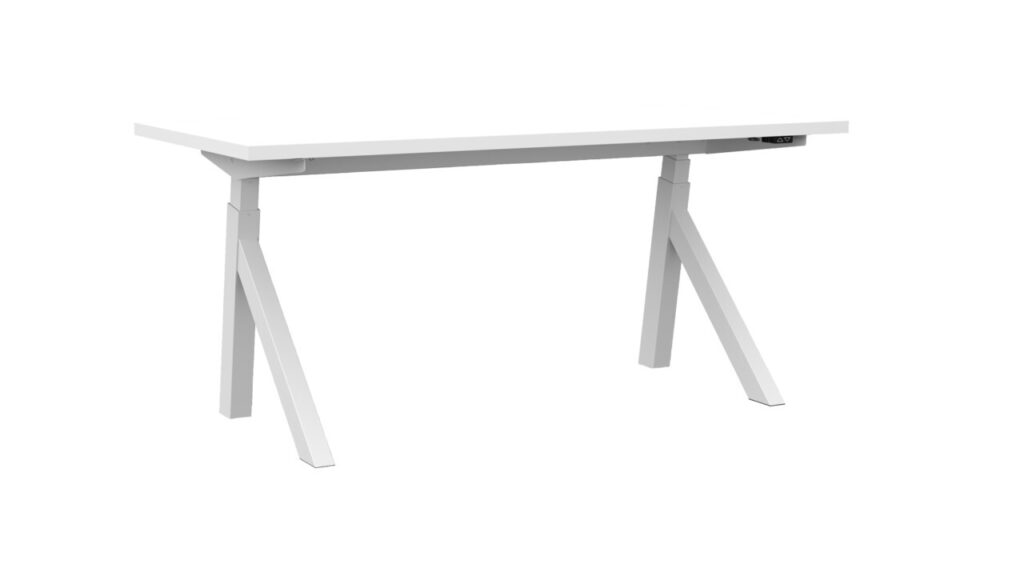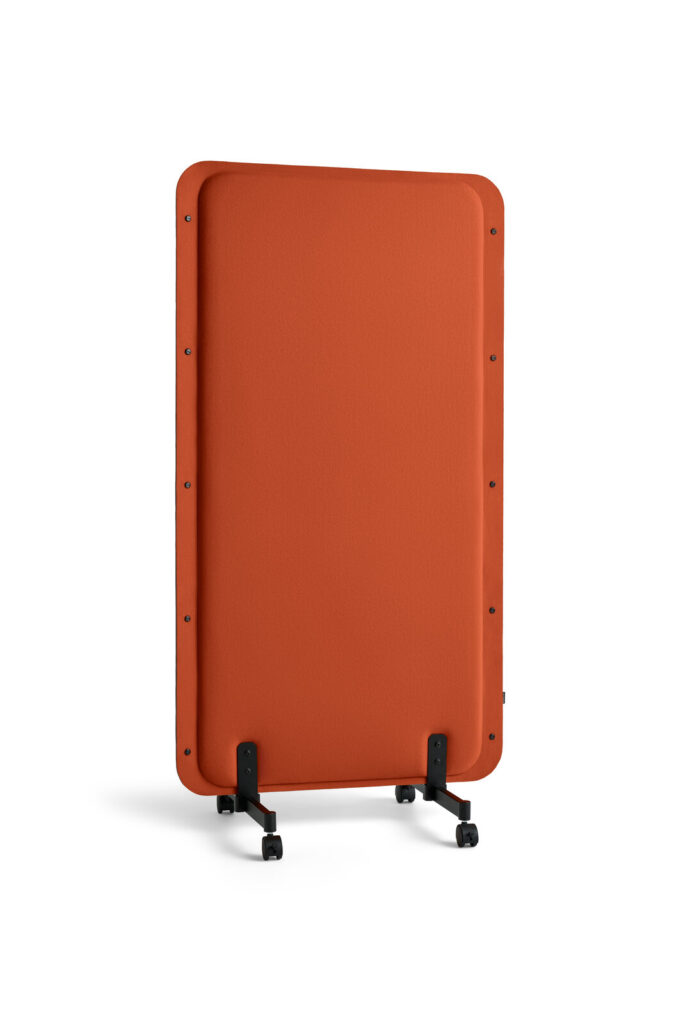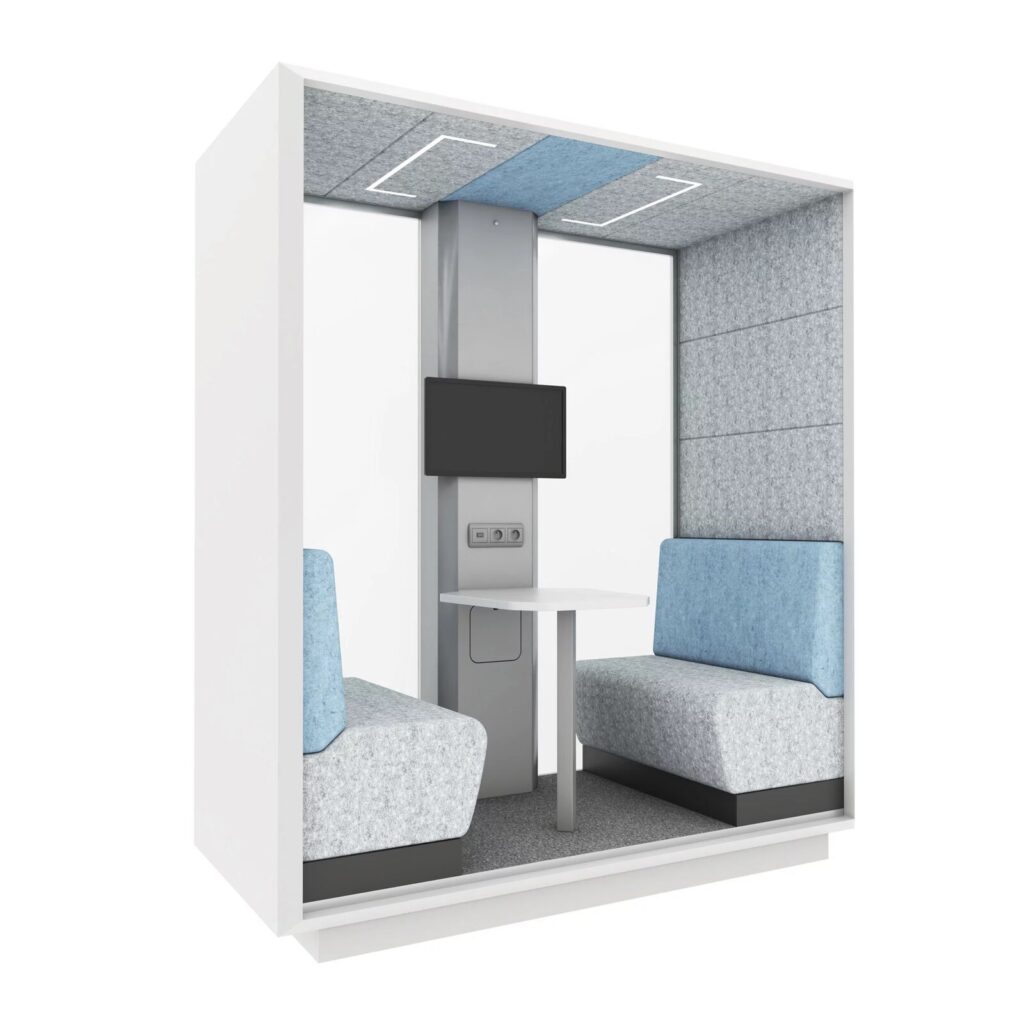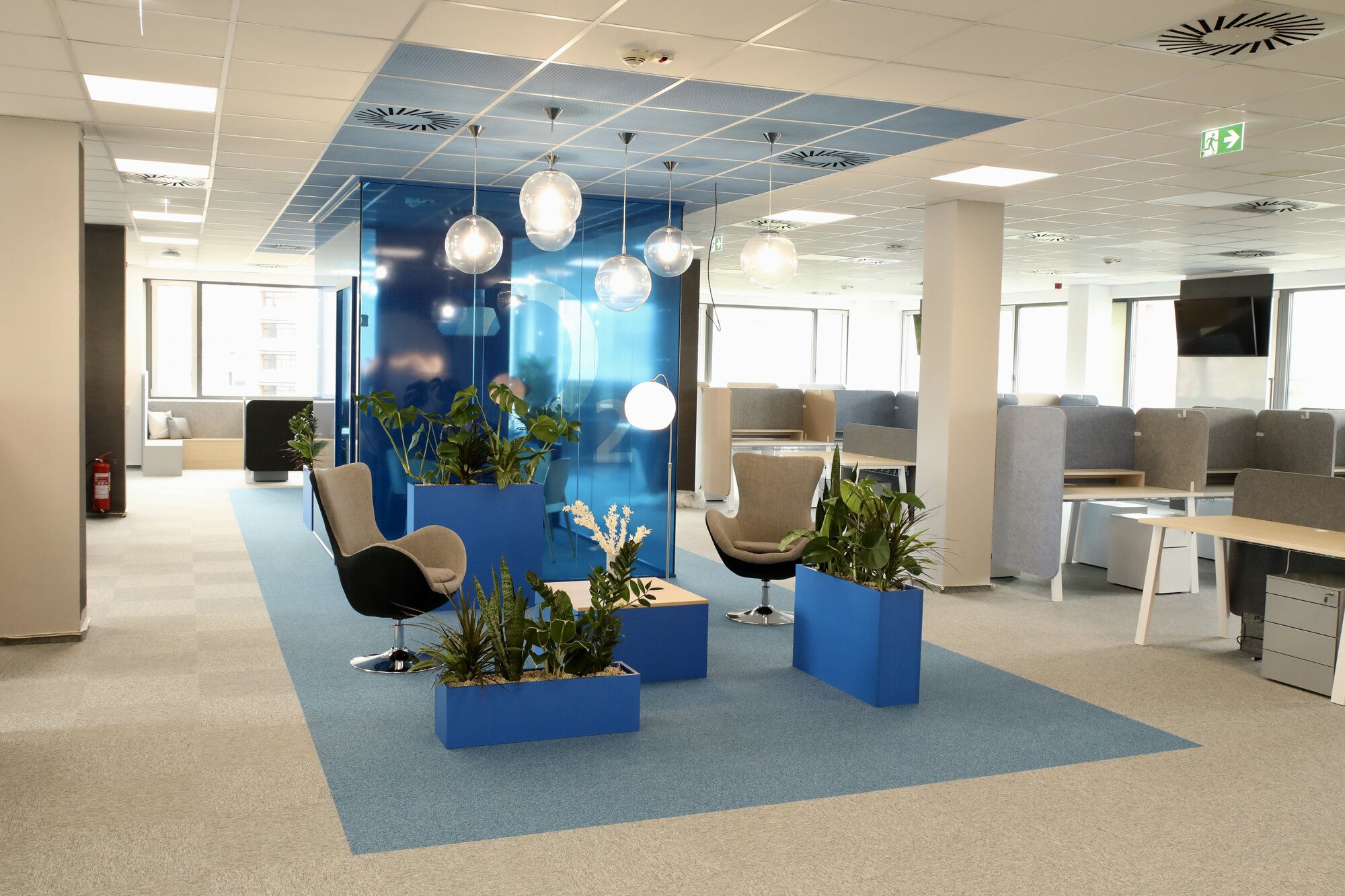Hybrid work, i.e., working partly from the office and partly from home, is no longer the preserve of a few progressive start-ups. It is becoming a popular model in many companies and even in the public sector. Employers are therefore trying to transform the look of their offices, replacing closed spaces and static workstations with flexible openness and freedom. Modular furniture, other interior elements, and technological equipment are used to achieve this. How to choose everything and connect it smartly?
Offices are adapting to employees
Today’s employees demand a high degree of flexibility, which is reflected not only in the option to work from home, a relaxed corporate culture, or flexible working hours, but also in adaptable spaces. These are precisely what support the hybrid model, thanks to the possibilities for independent and interactive work, which facilitates communication with colleagues. These include modular furniture, which is versatile, but also movable walls or acoustic panels and boxes for sound comfort.
Furthermore, emphasis is placed on well-being associated with ergonomic furniture, shared relaxation areas, and plenty of greenery. These may be additional reasons why people enjoy going to work and prefer the office to working from home. Not to mention the fact that a momentary distraction in the chill-out area or working surrounded by plants has been proven to calm and improve mood.
Modular and ergonomic furniture
Today’s office furniture should be lightweight, easily reconfigurable, and ergonomic. Height-adjustable desks, which can be customized to suit individual needs, are therefore very popular. They are particularly sought after in companies with a “hot desk” system, where several people share the same workstation. These desks allow you to stand or sit, ideally on a high-quality ergonomic chair with an adjustable seat, armrests, and headrest. Then all you need to do is choose a suitable mobile container with drawers, a desk lamp, and, if desired, some houseplants, bulletin boards, and other details.

Open spaces and movable walls
A large space is required for company-wide meetings or joint breakfasts, while much less space is needed for meetings between two people. Modern offices should therefore have modular or movable walls so that you can easily divide the space into smaller, more intimate zones. The size of meeting rooms no longer needs to limit you, nor does their location.

Acoustic comfort
Open-plan offices can also have disadvantages, which until recently included a noisy environment and the associated poor acoustics. Fortunately, however, there are soundproofing (acoustic) elements for maximum comfort in this area as well. They can be made of various materials and most often take the form of screens or standing or hanging panels that disperse or absorb noise. And if that’s not enough, acoustic boxes are perfect for undisturbed creative work, phone calls, or meetings with a small number of people.

Technological equipment
The hybrid model also includes ensuring high-quality remote work. Employees should have access to digital tools that make it easier for them to connect to video calls or find an available spot in a meeting room or shared office. When it comes to smart technology in the workplace, examples include shading based on sunlight intensity and smart lighting that creates the ideal working environment. At the same time, it also saves energy because it only lights up when desks are occupied.
Remote working has its advantages, but remember, there’s nothing like meeting with colleagues and discussing everything face to face. Everything gets done faster, and human contact is irreplaceable.


